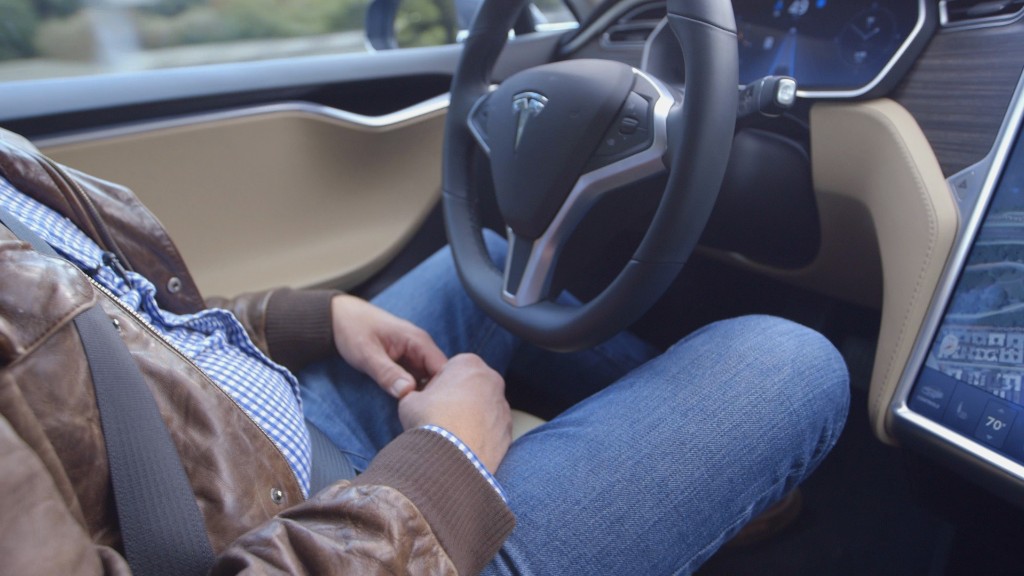
Sometimes, words can be dangerous. Take Autopilot, for instance.
With a name like that, is it any wonder that Tesla drivers might assume that the semi-autonomous driving system can just take over?
It is called Autopilot, after all. It invites the driver to take their feet off the pedals and hands from the steering wheel for long stretches of highway travel. The name says, essentially, "We've got this."
Doesn't it?
In fact, the Tesla (TSLA) Model S Owner's Manual says quite the opposite, and it's littered with red triangles that have exclamation points. Reading through it provides valuable -- and possibly life-saving -- insight into the limits of Tesla's so-called Autopilot system.
The Autopilot system, which is actually a suite of different technologies, can do some pretty amazing things. It can maintain the car's lane position, as well as a safe following distance behind traffic ahead. (Lots of modern cars can do those things.) Autopilot can also handle a lane change when you signal for one.
The automatic cruise control that's part of Autopilot automatically maintains a safe distance behind traffic ahead, and can even stop automatically if cars stop.
Some of the time.
The manual warns that the system "may not brake/decelerate for stationary vehicles, especially in situations when you are driving over 50 mph and a vehicle you are following moves out of your driving path and a stationary vehicle or object is in front of you instead."
So, if a vehicle in front of you moves over to go around a stopped vehicle, Tesla's Autopilot system may not respond at all to that stopped vehicle. If you don't do anything, you could very well crash into it.
Related: Tesla Autopilot probed after crash
"Always pay attention to the road ahead and stay prepared to take immediate corrective action," the owner's manual says.
That phrase, or some variation of it, appears at least a dozen times in the manual, accompanied by the red triangles. The manual lists a variety of situations in which the Tesla Autopilot system can fail, requiring the driver to immediately take over.

Another part of Autopilot is an automatic steering system that keeps the vehicle in its own lane, and can even even change lanes if the driver uses the turn signal. But the owner's manual states very clearly: "Warning: Autosteer is a hands-on feature. You must keep your hands on the steering wheel at all times," (In many situations, though, the system will continue to work without hands on the wheel.).
Drivers are also warned that the system is intended for use by a fully attentive driver and only on highways without intersections. (The highway where Joshua Brown was killed while driving a Tesla Model S on Autopilot had intersections with crossing traffic.)
Tesla's system works by sensing lane markings and vehicles ahead on the road. But it has trouble doing that during harsh weather, in bright light, on sharp curves or on rough roads, among other things, according to the manual.
"Autosteer may not steer Model S appropriately. Always drive attentively and be prepared to take immediate action," the manual says.
But how many drivers ever read the owner's manual? Based on most of the people I've ever talked to in the auto industry, very few. (Tesla did not respond to questions about how it helps new owners learn to use these systems.)
I'm guilty, too. As part of my job, I drive dozens of different cars every year, many with technologies very similar to Tesla's Autopilot. I almost never look at the owner's manual.
Of course, I've also learned, from years of sometimes scary experience, to always keep my hands on the wheel, my feet near the pedals and my eyes on the road. No red triangles needed.

